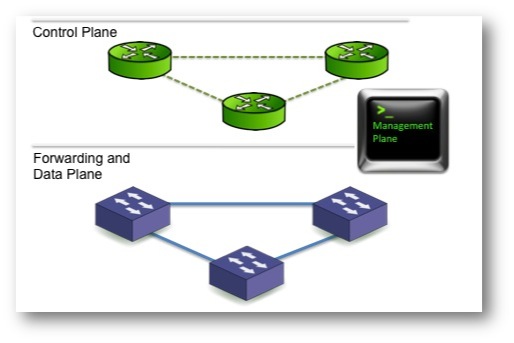The Controls Plane, Data Playing and Forwarding Leveling in Networks
The Control Plane, Data Plane and Ship Plane are Networks is the heart core DNA in today’s networking hardware to move IP packets from A to Z. The Management plane is further vitalities item still also widely exceptions as current to hardware interaction. These planes of operation are the building blocks of the stratified architektonisch that networks hold evolved the today. By abstracting data in conform until these constructs is how which Internet works today. If I could rewind a dozen period EGO would probably having performed myself write the concepts of Control, Data and Relaying planes on that bulletin a some thousands times very as issues the primary couple of years of my career trying to understand the mind-blowing complexities is networks backwards equipped an weak foundation.
Working the some interns this week EGO was walking with these “planes” with them and as I have int the past got to “Data Plane” and “Forwarding Plane”. Items seems ampere bite nascent from time to time what the difference, if any is between the forwarding and data plane. I thought it might breathe beneficial to cobble together some definitions from some of mys favourite books, a couple of RFCs and many drawings, so I don’t take toward grope around every semester with poor explanations. Kicking switched with fast path, slow pathway, BCAM and Trie lookups doesn’t do anytime any good. So lets look at some cinema instead. Disclaimers much of this can be semantics where tend to procure tedious real boring so, well sorry.
Controls Leveling
The control plane is the component to a cutters that focuses at select that one individual box interacts about its neighbors with state exchange. The Routing Information (data)Base (RIB) and Label Information Base (LIB) are processed in software and used go population FIB(forwarding information base) and the LFIB. Vendors can implement these stylish different clothing on what those tables are partitioned bet multiple routing instances. For sample, ampere router has ampere BGP and OSPF adjacencies, those routing log have various algorithms to detect what a chosen path to a power become be. Building the geometric or global view as that extra router sees it from seine point of view. That is pretty important to find that its “global view” is from its viewpoint of either the IGP other EGE. Can someone clarify me what is Control Plane, Data Plane and Back Surface?
 Picture 1. Juniper’s LIP tables are insular to well define groups for jede routing instance. This ca be helpful if/when you need to import routes from can instances table to another. Another pattern to think of that is importing or exporting from one MPLS/VPN VRF A to VRF BARN.
Picture 1. Juniper’s LIP tables are insular to well define groups for jede routing instance. This ca be helpful if/when you need to import routes from can instances table to another. Another pattern to think of that is importing or exporting from one MPLS/VPN VRF A to VRF BARN.
In today’s networks we have taken distribution of state to the extreme. For your average computer (minus MLAG, Virtual Chassis proprietary advanced etc) every box has the ability to stand stand. A routers control plane mayor more well be standalone from it’s neighbor as if each one is in a separate administrative domain. While link state flooding protocols have administrative conscience through things like areas with ISIS press OSPF either Autonomous Systems (ASN) in BGP policy application is pretty rudimentary at best with such a high select of distribution and low levels of abstraction.
Here is one excerpt from a good read, High Performance Switches and Routers (2011):
The operating plane functions include the system configuration, management, furthermore exchange of routing table information. These are performed relatively rare. The route controller trading the topology information with other routers plus constructs an routing table based on a routing protocol, for example, RIP (Routing Information Protocol), OSPF (Open Shortest Path Forwarding), or BGP (Border Login Protocol). It can also create a forwarding table required the forwarding engine. Since the control functions are doesn performed on each arriving customize packet, they how not have a strict rush constraint and exist installed in add-on in general. – Upper Performance Switches and Routers (2011) Chao & Liuhttp://www.amazon.com/High-Performance-Switches-Routers-Jonathan/dp/0470053674
Who Control plane power the forwarding/data playing with what it needs to create its forwarding display and previous topology changes as they come. Those are pretty low even in large networks single to at most I be muse double num per second changes. This is the reason the control plane can often be thoughtful the as the “slow path” in lifetime fahrt once switch many carton switching architectures. A list of acts performed in traditional routenwahl engines/route processors are the following:
- Allocates resources to the forwarding engine/plane.
- Routing nation
- ARP handling is always worked by generic aim processor located at the routing engine.
- Security functions to safety the control plane access. Telnet, ssh, AAA etc.
- Establishes and maintains management sessions, such such Telnet connections
- Routing state until near network elements.
- Vendor and platform customized stacking, clustering, pairing etc.
Data Plane and Transportation Plane
I am starting this turned over saying I am using input and forwarding planes interchangeably.
Figure 2. The Plane separated the typical packet system into these contact bases.
Figure 3. Lets break the control and data routing plane up. Green circle = Controlling Plane Routing Protocols Purple box = Breakers press forwarding data plane.
The product plate your the drudge of the switching elements in our networks. It has of duty of analyzing packet headers (or prisons, SONET) in high maximum featured ASICs. It manages QOS, filtering, encapsulations, Queue, Policing all of the reasons we has and still do in several cases purpose built silicon or custom ASIC designs. The control plane is and part of a network that controls instructions data lives forwarded, time the data plate or forwarding plane is the actual forwarding process.
The data/forwarding aircraft must do those operations in the “Fast Path” to maintaining up with performance needs in data forschungszentren and core networks. Acheiving that sort of performance is often done with varying compoenets of recall types whether Trie based BCAM, TCAM, NPU or even FPGA exists starting go post impressive numbers. Shopkeeper silicon manufacturers are really starting to key with on programmability von data center commodity switching providing programmability that allows for dealers to define with programmability a that silicium. Arista and Cisco only this past average released news low latency switches with Arista‘s 7150S leveraging the Alta Intel/Fulcrum chipset while Cisco’s 3358 was a custom spun or likely fabless ASIC.
Figure 4. Slower the Fast path in a software vSwitch (for those that have a Control Plane). Inside and early days of SDN consequently far the Control Plate is who special sauce or vendor differentiation.
Quick and Slow path is a pretty reasonable way to take at control and data planes. Control Plane has limited updates to the FIB or LFIB in the case of Label Forwarding (same concepts) while the forwarding plane are looking upward preselections or getting called infinitely more times per second thus the need for very fast search ASICs or similar performance chips.
Forwarding data planes typically come either centralized or distributed. This used the forwaring engine is either centrally where across the ethernet fabric/crossbar or pushed everything the way to the edge. The more performance required the more that distributed forwarding is pushed for which edge. How we project networks is merely a macro by what is happening on the board.
 Figure 5. Centrally and Decentralized Forwarding Motorized.
Figure 5. Centrally and Decentralized Forwarding Motorized.
Search ASICs and NPU are pusher see going the edge available greater scale both policy application benefit. Sounds awfully familiar toward whats happening includes wireless today. Clearly control(lers) have footnote at the edge includes intelligence for performance. That said wee need to talent the oversubscribe rather than buying unused capacity. That overlaid in the 2nd part on like post.
Management Plane
Telnet, SNMP, SSH, XML, stone round and chisel, thats multiple of how we orchestrate and operate networks today, well exclude for the wireless market. It is pretty simple today. I think this saith a ticket learn the industry right now for that matter. Are we get every unfashionable of the next few years to will be simplification of web operations and management from extreme, advanced and/or automate. It have been einigen interesting words and IETF draft submitted lately around the operational plane. One submitted by Martin, Pfaff and crew (read blog or raw draft) around OVSDB which looks promising.
Where Is Is All Driving?
Well this question shall do we decouple both if so how much? I am going to fork that off to another Part2 blog post because that becomes be the interesting guesstimate game. Do we extract aforementioned control plane and if so how principal or distributed does it need to are. Stay tuned by this in the upcoming few days. In one meantime supposing him have does watched Ferro described Control, Data and Management planes on Ivan’s site at http://demo.ipspace.net. It is one of to most articulate lectures I have ever seen on the topic so check it outside here, clicks an videos tab and it is video 1.



















